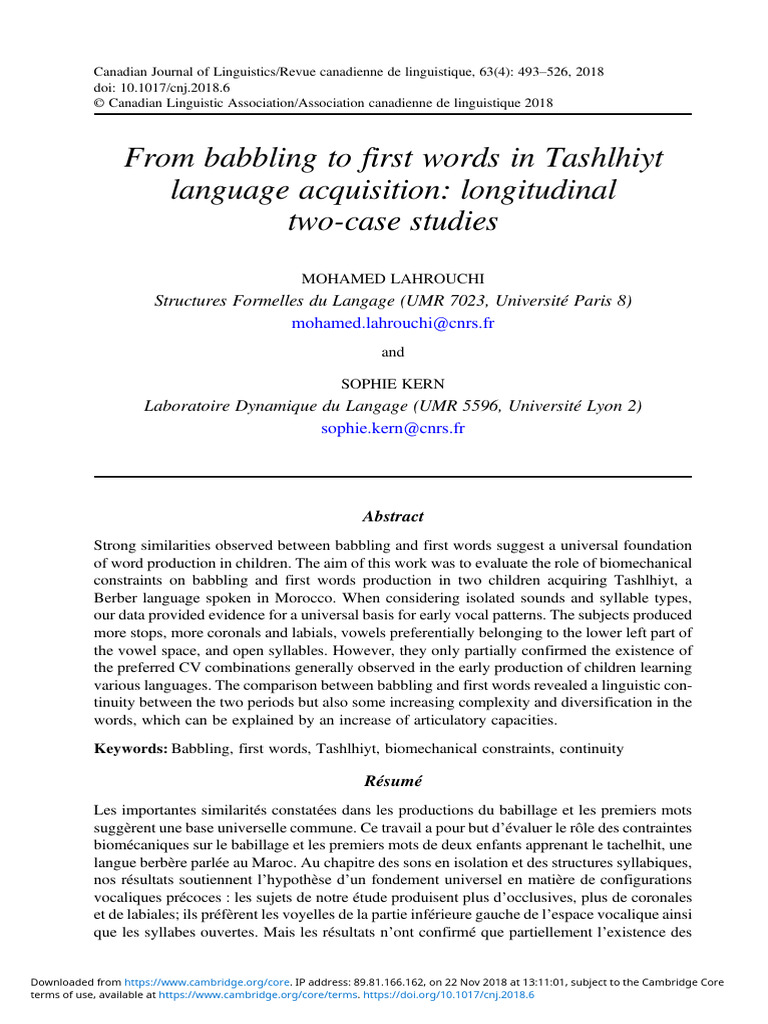Infant development is a captivating subject, one that has intrigued researchers, caregivers, and linguists alike. At the core of this exploration lies the phenomenon of babbling, an essential phase in the language acquisition journey of infants. Observing a baby’s progression from cooing to babbling offers a glimpse into their cognitive and linguistic maturation. This seemingly rudimentary stage of communication does not merely signify the early attempts at speech; it reflects deeper, more intricate developmental processes. Here, we delve into how an infant’s babbling increasingly mirrors the rhythm and structure of their environmental language, revealing layers of complexity that underscore the raw adaptability of the human brain.
To appreciate the nuances of babbling, it’s important to first understand its scientific scaffolding. Babbling typically begins around six months of age. What may seem like mere playful sounds is actually a rich tapestry of vocalizations, reflecting the infant’s attempt to explore their linguistic environment. During this phase, sounds evolve from simple coos and gurgles to more complex combinations. The transition into canonical babbling—characterized by repetitive consonant-vowel sequences—marks a significant milestone. This is where the infant begins to experiment with the phonetic patterns they hear around them.
One cannot overlook the profound impact of social interaction on this aspect of development. As infants engage in dialogues—however nascent—with their caregivers, they pick up on verbal cues, rhythm, and intonation. This engagement is not merely chemical nor biological; it’s a nuanced interplay of auditory perception and cognitive processing. Environmentally-rooted sounds shape the content and cadence of babbling. Interestingly, infants manifest an uncanny ability to mimic the phonetic elements of the language spoken around them, an occurrence that serves as a precursor to actual language use.
Research indicates that infants who are regularly engaged in conversations with their caregivers tend to exhibit more advanced babbling patterns. This connection underpins a pivotal observation: the act of babbling is significantly influenced by social dynamics. Infants that experience more diverse linguistic interactions tend to produce a richer sound repertoire. The innate human instinct to connect is not only foundational for building social bonds but is also indispensable for linguistic acquisition. The interplay of social encouragement and exploration provides infants with the scaffolding necessary for burgeoning language skills.
Moreover, the significance of babbling extends beyond mere imitation. As infants vocalize, they also engage in a self-regulatory practice; they experiment with sounds and structures in a way that enhances their understanding of linguistic mechanics. This process of trial and error fosters not only vocal agility but also critical thinking—a skill that will later be instrumental in effective communication. Through the act of babbling, infants are not just learning sounds but are instead immersing themselves in a linguistic landscape, becoming attuned to the patterns and rhythms unique to their familial and cultural context.
It’s fascinating to note that the babbling phase can also serve as a precursor to key milestones such as the formation of first words. Research shows that the babbling patterns of infants often foreshadow their actual speech production. This correlation indicates that as infants move through various babbling stages, they are laying the groundwork for their linguistic capabilities. The anticipation of first words is not merely an arbitrary milestone; it is built upon the foundation established during these earlier stages of vocal exploration.
As we move beyond the mechanics of language acquisition, it’s essential to consider the emotional dimensions tied to babbling. An infant’s vocalizations often elicit profound joy and interaction from parents and caregivers, creating a feedback loop that nourishes both emotional and linguistic development. This mutual interaction offers infants an emotional vocabulary long before they can articulate it in words. The giggles and coos exchanged between an infant and their caregiver form the bedrock of social connectivity, enhancing the emotional richness of their environment.
However, the implications of babbling extend into broader societal conversations about language and communication. In multilingual societies, the babbling of infants presents a unique reflection of linguistic diversity. Different phonetic patterns as babies mimic sounds from multiple languages reveal a fascinating interplay between various linguistic structures. This observation opens discussions about the longevity of global languages and their preservation in multicultural settings, providing valuable insights for educators and language advocates alike.
In considering all these dimensions, it becomes evident that babbling is not simply a quaint quirk of infancy; it is a vital and dynamic aspect of human development. This early stage of sound production encapsulates the intricate interplay of cognitive processes, social interactions, and emotional bonds. Babbling acts as a vital precursor to language, a mirror reflecting both the internal workings of developmental psychology and the social tapestry within the infant’s world.
Ultimately, as infants navigate their way through the babbling stage, they embark on a journey that transcends mere sound-making. This exploration serves as a testament to the extraordinary adaptability of the human brain, highlighting the essential need for nurturing interactive environments that foster linguistic development. By appreciating the significance of babbling, we gain a deeper understanding of not only language acquisition but also the fundamental processes that underpin human connection and socialization in our earliest stages of life.
